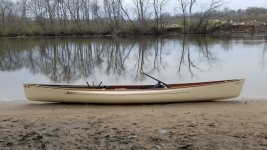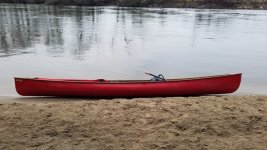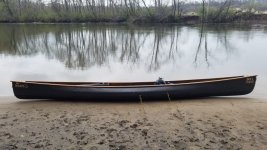- Joined
- Nov 22, 2021
- Messages
- 239
- Reaction score
- 121
I'm not sure who started it, maybe Ted Bell, maybe John Winters, Maybe David Yost.
Excluding variations of the Prospector, which seems like it will always be around and popular, most modern composite touring canoes are Swede form with asymmetrical rocker. If they are solo, their widest point is well up the side with a tuck-in just below the gunnels. I'm talking Northstar, Swift, Hemlock, etc., etc.
You know who doesn't design their canoes that way? Wenonah.
They like Swede form, but almost all their canoes have either no rocker or symmetrical rocker and their solo canoes have their widest point well down the side.
There is no question that Wenonah is a major player. If you rent a canoe for the Boundary Waters, there's a good chance it will be a Wenonah.
Why haven't they adopted the more modern design philosophy? Are they just old school or do they have a legitimate reason for not jumping on the modern bandwagon?
Excluding variations of the Prospector, which seems like it will always be around and popular, most modern composite touring canoes are Swede form with asymmetrical rocker. If they are solo, their widest point is well up the side with a tuck-in just below the gunnels. I'm talking Northstar, Swift, Hemlock, etc., etc.
You know who doesn't design their canoes that way? Wenonah.
They like Swede form, but almost all their canoes have either no rocker or symmetrical rocker and their solo canoes have their widest point well down the side.
There is no question that Wenonah is a major player. If you rent a canoe for the Boundary Waters, there's a good chance it will be a Wenonah.
Why haven't they adopted the more modern design philosophy? Are they just old school or do they have a legitimate reason for not jumping on the modern bandwagon?




